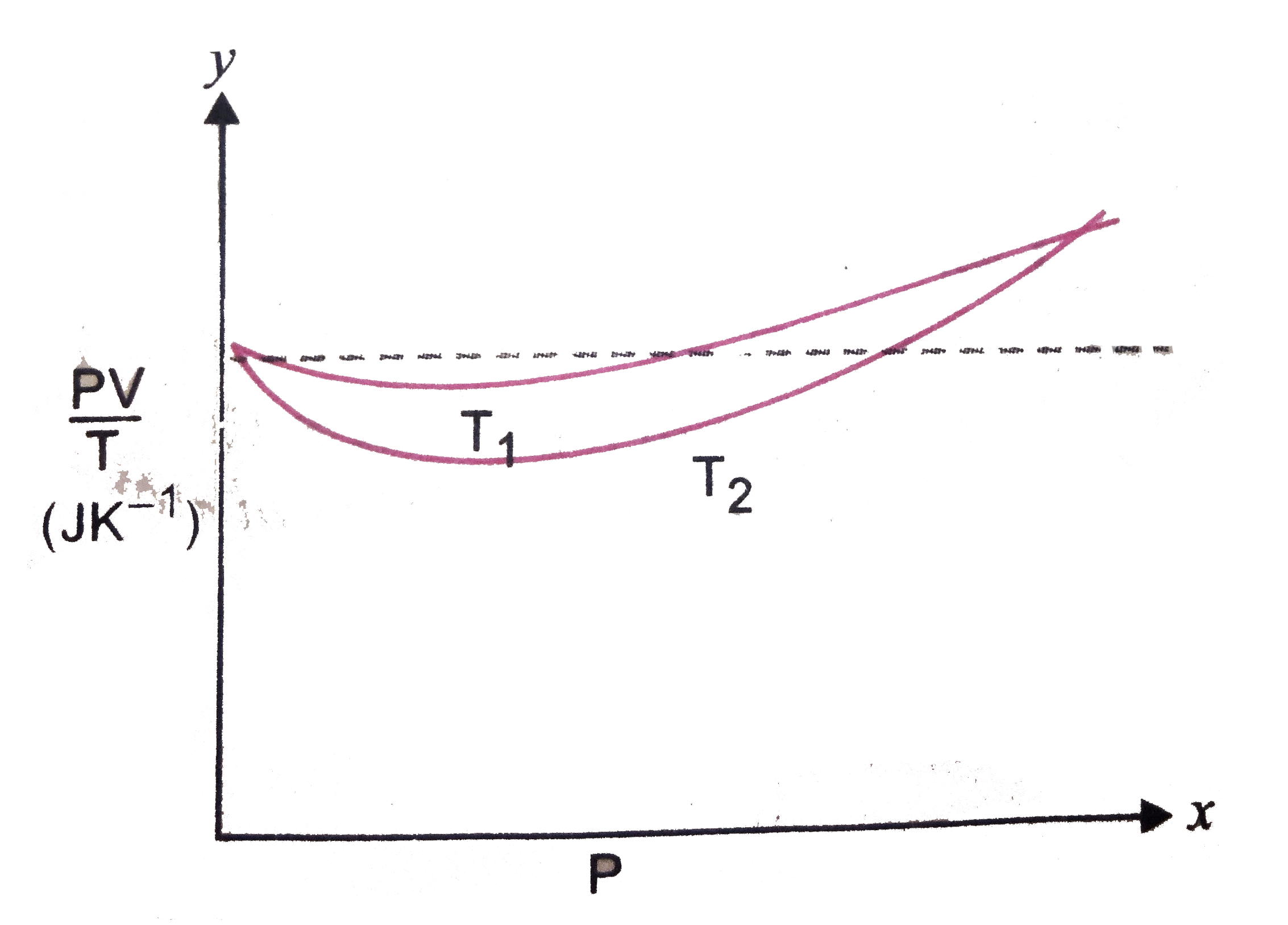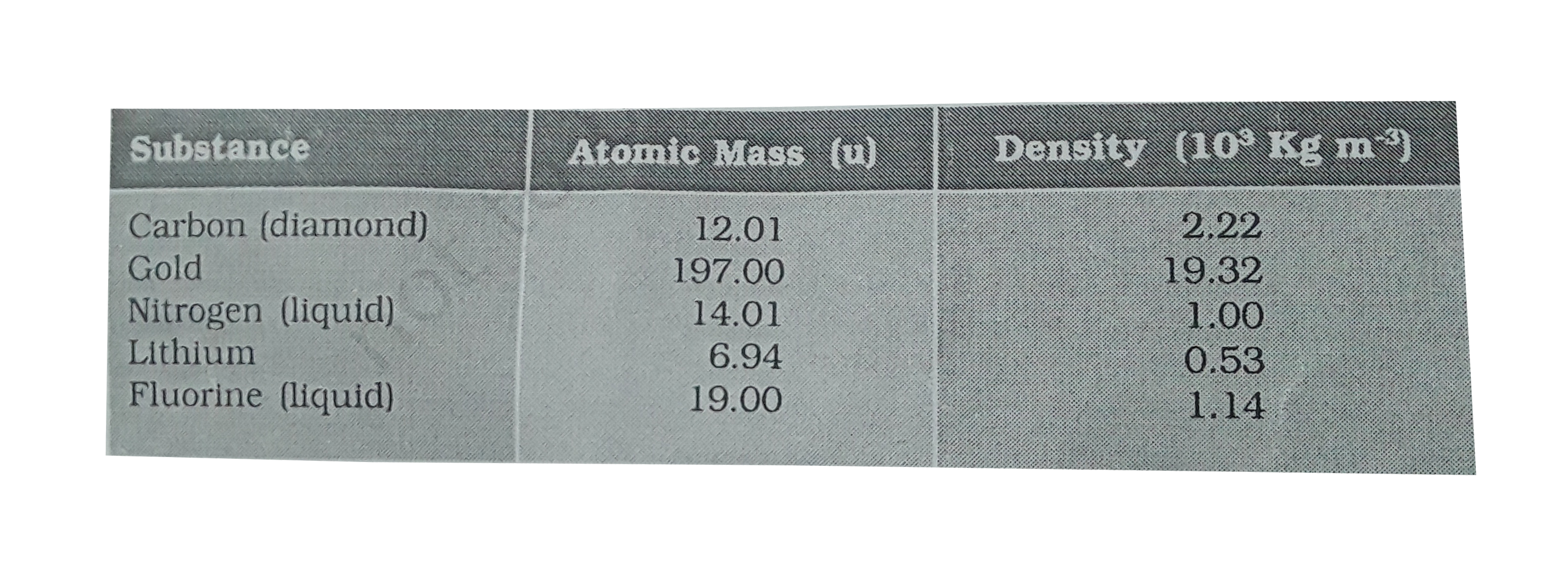EXERCISE from NCERT PHYSICS Chapter 2 KINETIC THEORY for Class 11
| Class 11 | PHYSICS |
| Chapter | KINETIC THEORY |
| NCERT PHYSICS | EXERCISE |
| Medium | English |
| Academic Year | 2023-2024 |
Question 3
Fig shows of PV/T versus P for 1.00×10−3kg of oxygen gas at two different temperatures.
(a) What does the dotted plot signify ?
(b) Which is true : T1<T2orT2<T1?
( c) What is the value of PV/T where the curves meet on the Y-axis ?
(d) If we obtained similar plot for 1.00×10−3kg of hydrogen, would we get the same value of PV/T at the point where the curves meet on the y-axis ? If not, what mass of hydrogen yield the same value of PV/T (for low pressure high temperature region of the plot) ? (Molecular mass of H=2.02u, of O=32.0u,R=8.31Jmol−1K−1
 View Solution
View SolutionQuestion 4
An oxygen cylinder of volume 30 litres has an initial gauge pressure of 15 atm. And a temperature of 27∘C. After some oxygen is withdrawn from the cylinder, the gauge pressure drops to 11 atm. And its temperature drops to 17∘C. Estimate the mass of oxygen taken out of the cylinder. (R=8.1Jmole−1K−1, molecular mass of O2=32u).View SolutionQuestion 8
Three vessel of equal capacity have gases at the same temperature and pressure. The first vessel contains neon (monoatomic), the second contains chlorine (diatomic), and the third contains uranium hexafluoride (polyatomic). Do the vessels contains equal number of respectice molecules ? Is the root mean square speed of molecules the same in the three cases ? If not, which case is vrms the largest?View SolutionQuestion 10
Estimate the mean free path and collision frequency of a nitrogen molecule in a cylinder containing nitrogen at 2 atm and temperature 17∘C. Take the radius of a nitrogen molecule to be roughly 1.0Å. Compare the collision time with the time the molecule moves freely between two successive collisions. (Molecular mass of nitrogen = 28.0 u).View SolutionQuestion 13
A gas in equilibrium has uniform density and pressure throughout its volume. This is strictly true only if there are no external influences. A gas column under gravity, for example, does not have uniform density (and pressure). As you might expect, its density decreases with height. The precise dependence is given by the so-called law of atmospheres
n2=n1exp[−mg(h2−h1)/(kBT)]
where n2, n1 refer to number density at heightsh2 and h1 respectively. Use this relation to derive the equation for sedimentation equilibrium of a suspension in a liquid column:
n2=n1 exp [−mgNA(ρ−ρ')(h2−h1)/(ρ RT)] where ρ is the density of the suspended particle, and ρ that of surrounding medium. [NA is Avogadro’s number, and R the universal gas constant.] [Hint : Use Archimedes principle to find the apparent weight of the suspended particle.]View SolutionQuestion 14
Given below are densities of some solids and liquids. Give rough estimates of the size of their atoms :
 [Hint : Assume the atoms to be ‘tightly packed’ in a solid or liquid phase, and use the known value of Avogadro’s number. You should, however, not take the actual numbers you obtain for various atomic sizes too literally. Because of the crudeness of the tight packing approximation, the results only indicate that atomic sizes are in the range of a few Å ].View Solution
[Hint : Assume the atoms to be ‘tightly packed’ in a solid or liquid phase, and use the known value of Avogadro’s number. You should, however, not take the actual numbers you obtain for various atomic sizes too literally. Because of the crudeness of the tight packing approximation, the results only indicate that atomic sizes are in the range of a few Å ].View Solution
